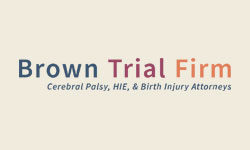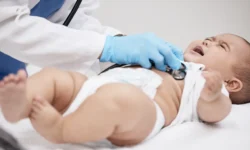Key facts about hemiplegia in newborns and when you can file a medical negligence lawsuit
The phenomenon known as “hemiplegia” refers to a type of paralysis experienced on a single side of the body. This loss of motor function can be caused by a range of preceding events, including aneurysm, stroke or even traumatic brain injury. Loss of function stemming from this condition is seen on the opposite side of the body from the location of the brain damage.
Hemiplegia is typically marked by damage to the baby’s corticospinal tract. Birth trauma and resulting oxygen deprivation are among the notable causes. Cases of hemiplegia in babies and small children tend to be linked to cerebral palsy, unless another type of observed trauma exists.
Roughly 1 out of every 1,000 newborns suffers from this condition, with premature births presenting heightened risk. Hemiplegia stemming from the birth process is often caused by delivery-related trauma, such as the misuse of suction or forceps by medical practitioners.
If you are the parent of a child suffering from hemiplegia, having the birth records reviewed by a birth injuries lawyer may be a worthwhile pursuit.
Symptoms and early indicators of hemiplegia
Seizures are common in infants who are ultimately diagnosed with hemiplegic cerebral palsy, so their presence may be an early indicator that the condition is present. Additional hallmarks of the condition during the initial year or so of life include things such as:
- Favoring 1 hand over the other
- Coiling hand into a fist
- Failure to achieve typical developmental milestones
- Asymmetry of movement while standing or crawling
- One-sided muscle stiffness
- Balance struggles
When you notice any of these signs, seek diagnostic help from a physician so that age-appropriate interventions may be initiated.
Short and long-term effects of hemiplegia
Children afflicted by hemiplegia tend to face struggles in terms of maintaining balance, walking, engaging in tasks requiring fine motor skills and keeping control of the limbs on the affected side. Muscle weakness, stiffness and seizures are other potential complications.
The degree of impairment is largely determined by which area of the brain has been damaged by the triggering incident, and how profound that damage is. CT scans and ultrasounds may be used to assess the degree of harm suffered by the central nervous system or the brain, but hemiplegia is only diagnosed through a consultation with your doctor.
Though hemiplegia, once present, doesn’t escalate over time, it can lead to secondary conditions which are linked to motor function impairments. Cardiovascular problems often develop due to a lack of movement, and flexibility as well as joint and muscle mobility tend to suffer. Vision difficulties, epilepsy, speech delays, behavioral challenges and cognitive impairments are also possible.
The spasticity and stiffness that comes with hemiplegia can be mitigated somewhat with the use of medication, as can seizures stemming from the condition. Babies with hemiplegia may also benefit from rehabilitation and physical therapy services designed to provide quality of life improvements over time.
Kids with this condition often receive speech and occupational therapy, are fitted with braces and splints for added muscle stability, undergo independence training and may receive surgical treatment to address contractures in the joints.
A child diagnosed with hemiplegia has a long road ahead in terms of necessary medical and therapeutic interventions. However, if action is taken early on, they may be able to attain a degree of independence parents and caregivers may have thought impossible. In some cases, a child’s brain may be, in a sense, “rewired” so that damaged neural pathways eventually facilitate improvements in motor skills.
Medical negligence and hemiplegia
Acts and omissions on the part of medical professionals prior to, during or immediately after delivery are known to produce the sort of oxygen deprivation that can cause injury to the brains or nerves of infants. Hemiplegic cerebral palsy, tragically, is all too often the result. Traumatic brain injuries during the birth process can produce hemorrhages, swelling and other conditions that lead to permanent impairment of their motor function and nervous system response.
Sometimes, it’s a failure on the part of doctors or nurses to spot and promptly address pregnancy complications that lead to birth trauma and the subsequent emergence of cerebral palsy and hemiplegia. Or a physician may engage in an obstetrical intervention during labor—such as vacuum extraction, forceps delivery, or the improper administration of contraction-inducing drug Pitocin—that leads to a hemiplegic birth injury.
How a birth injury lawyer can help
In cases of hemiplegia at birth, parents may wonder where to go or to whom they can turn for help with the lifetime of challenges their child may face. Because birth injury medical malpractice claims are especially complex in nature, it’s important to align with a negligence attorney who understands the type of evidence and high-level analysis needed.
Parents of a child with a suspected birth injury event need to know that they’re not alone. The enhanced services, medical interventions and ongoing therapy patients inevitably require can pose a seemingly insurmountable financial challenge. That’s why it’s important to fight aggressively for fair compensation from those responsible for the harm done with the help of an experienced lawyer.
To see if you have a case, reach out to Brown Trial Firm today for your free consultation.
- Cerebral Palsy
- Caput Succedaneum and Cephalohematoma
- Neonatal Intracranial Hemorrhage (Childbirth Brain Bleeds)
- Hydrocephalus (Extra Fluid in the Brain Cavity)
- Cervical Dystonia
- Hemiplegia (Brain or Spinal Cord Injury)
- Hemorrhagic Stroke
- Neonatal Stroke
- HIE
- Periventricular Leukomalacia (PVL) Brain Injury
- Infant Seizures
- Spastic Diplegia (Spasticity in the Legs)
- Top Risks for Birth Injuries
- Fetal Alcohol Syndrome
- Facial Paralysis
- Spinal Cord Injuries
- Bell’s Palsy
- Brachial Plexus Nerves & Erb’s Palsy
- Klumpke’s Palsy
- G-Tubes for Newborns
- Medical Errors
- Cesarean Section & Birth Injury
- Negligence in Brain Cooling Treatment
- Craniosacral Therapy
- Occupational Therapy
- Speech Therapy
- Transition From Pediatric to Adult Healthcare
- Surgical Options for Spastic Cerebral Palsy
- Fetal Intolerance to Labor
- Jaundice (Kernicterus)
- Breech Position
- Placental Complications
- Umbilical Cord Problems
- Uterine Rupture
- Cervical Incompetence (Insufficiency)
- Blighted Ovum
- Necrotizing Enterocolitis (NEC) - Intestinal Inflammation
- Cephalopelvic Disproportion
- Meconium Aspiration Syndrome
- Amniotic Fluid Embolism
- Birth Injury from Premature Delivery
- Developmental Delays
- Abnormal Cord Insertion
- Infections at Birth
- Chorioamnionitis Bacterial Infection
- Premature birth
- Oxygen Deprivation
- Listeria
- Birth-Acquired Herpes
- Placenta Previa
- Placental Abruption
- Mismanaged Fetal Malposition
- Rapid Labor
- Obesity Related Birth Injuries
- Intrauterine Growth Restriction
- Blood Clots During Pregnancy
- Ectopic Pregnancy Misdiagnosis
- Myths & Facts About Birth Injuries
- Bacterial Vaginosis
- Gestational Diabetes
- Maternal Mortality Risk
- Oligohydramnios (Low Amniotic Fluid)
- Infections During Pregnancy
- Excessive Bleeding During Pregnancy
- Congenital Syphilis


